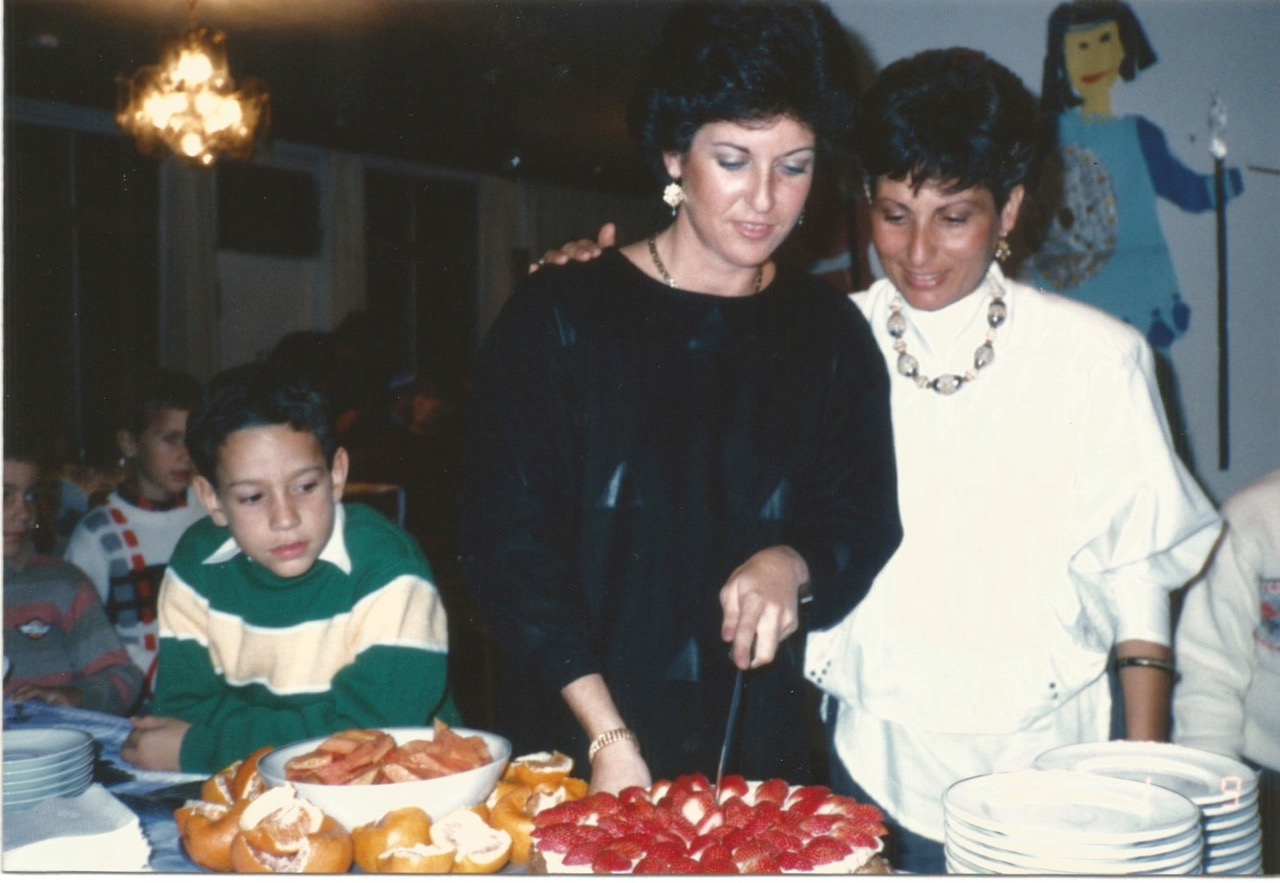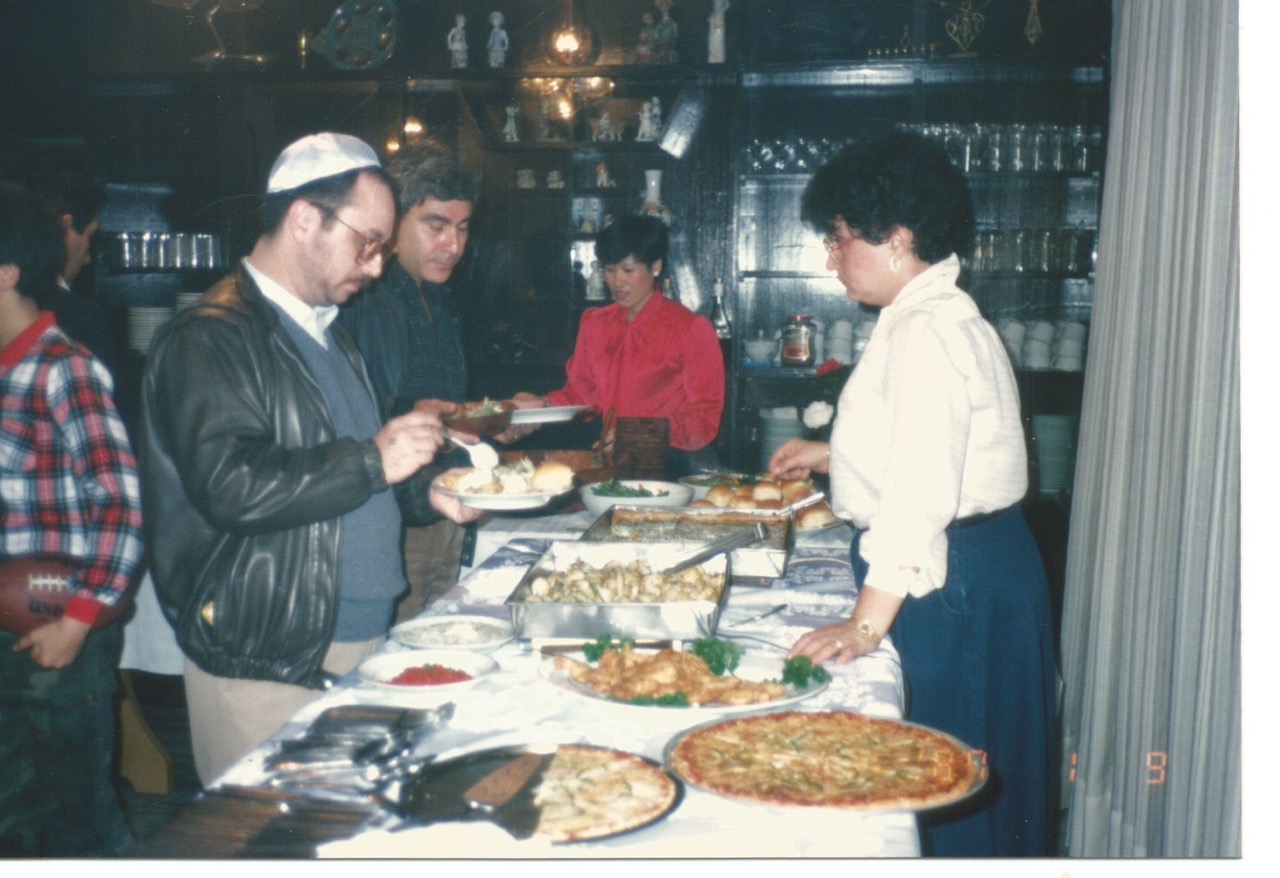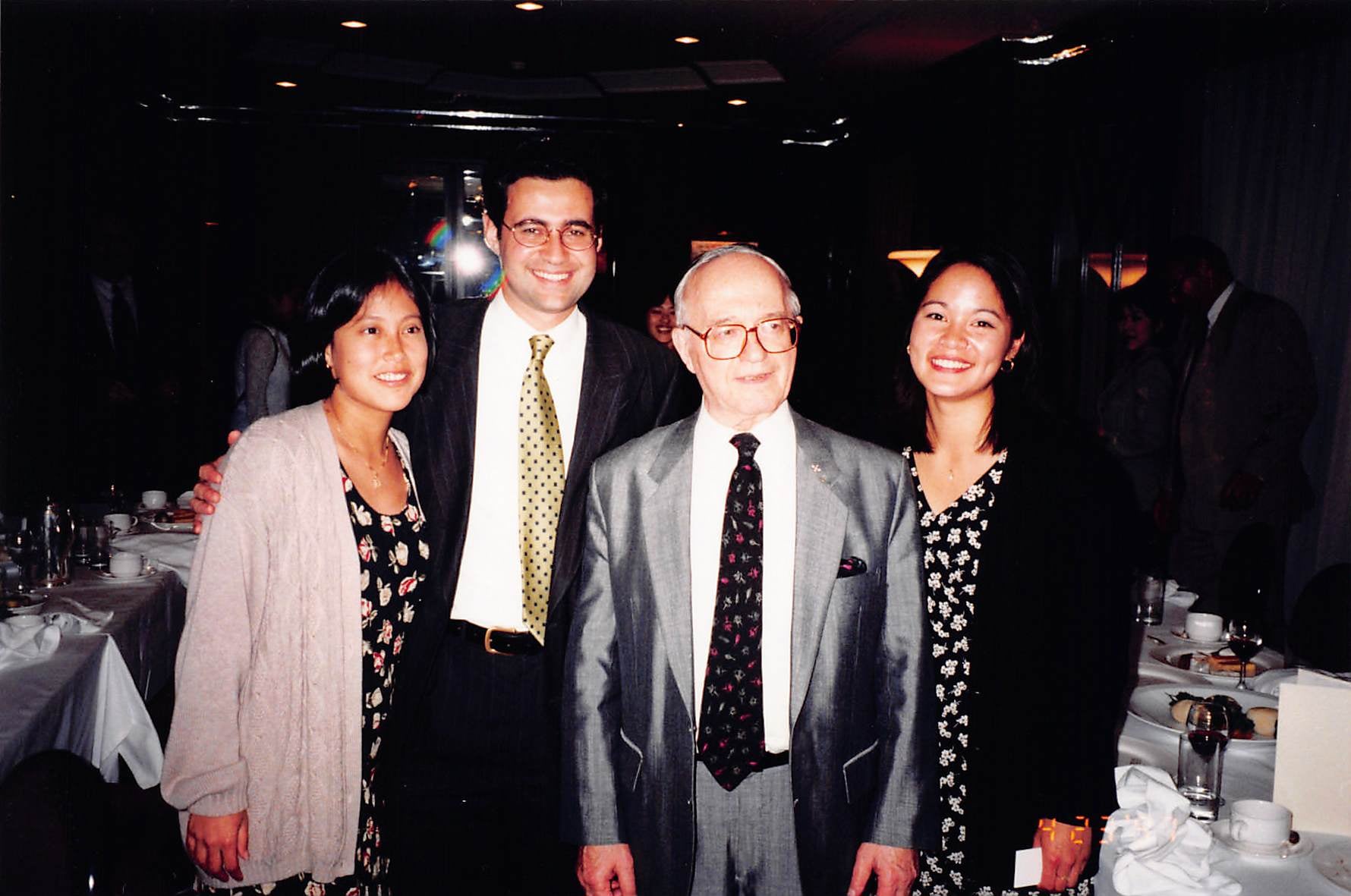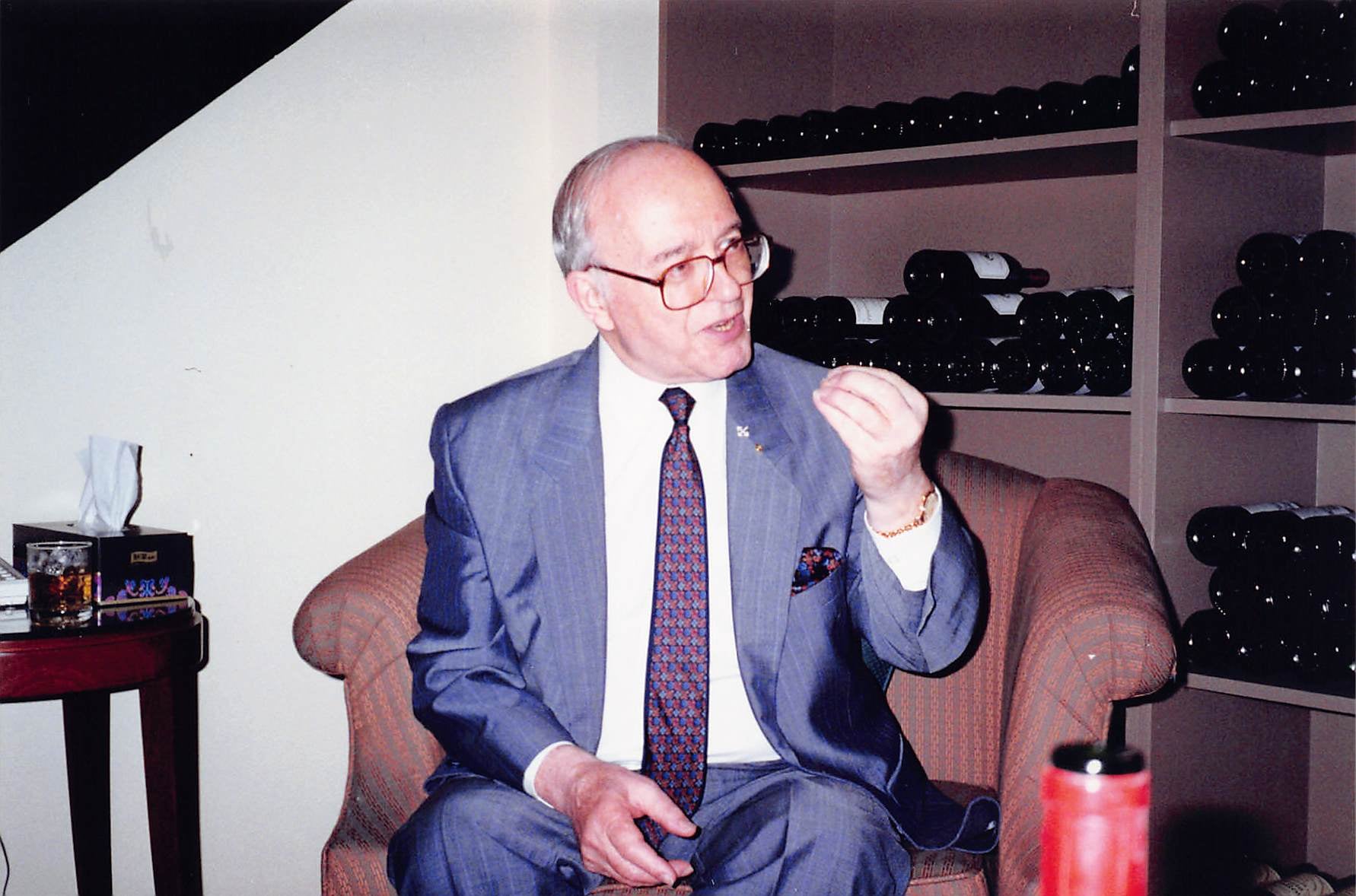1980s-1990: the “heyday” of Jewish Taiwan



Photos courtesy Ed Tucker, circa 1980s.
Still, the community was mainly transient; the community comprised Russian Jews and Sephardic Jews who had fled the middle east, as well as Americans and Israelis. The divide between Sephardic and Ashkenazi was a tangible one, former members note, but leadership was able to bring the community together, partially because it was so small and few other options for observance and social activity were available.2 The TJC was largely a community project. It had an elected president and a board of 6-8 people that met monthly, but members cite a strong spirit of community and volunteerism motivated by the existing lack of Jewish infrastructure. “Everyone had a job,” notes Rina Segal, Liberman’s daughter. Liberman’s entire family was deeply involved; the community itself was “like a family,” Segal notes.3 In the late 70s and early 80s, Segal herself led the Sunday school while her husband helped manage the religious services, and Liberman’s wife, Lea, helped oversee the Kosher kitchen with the women’s club. Recalls Bijo, “I always tried to convince other people to get involved and do their part...I wanted, if I had children, for them to have a Jewish life. That’s what motivated me to be active, even if I was not more officially involved.”4Meanwhile, Rabbi Ephraim Einhorn, who had moved to Taiwan in 1975 on business, had started his own congregation closer to the city center in 1979 out of the President hotel (his services would later move to the Ritz). Einhorn -- who was Taiwan’s only rabbi until 2011 -- and the TJC would sometimes collaborate in those early days; he would lead high holiday services, officiate bar mitzvahs and be invited to give occasional lectures. But his operation was mainly religious and catered more to business people who were only passing through Taipei and staying at the President Hotel, while the TJC served more as a social community for the Jews who were living in Taiwan long term.
Judaism, though, was still very much at the center of the TJC’s operation. They would get an occasional visit from a traveling rabbi for holidays when Einhorn wasn’t around, but services were for the most part lay-led. “Israelis managed the Hebrew portion and Americans handled the English portion,” remembers Ed Tucker, a former president during this period.5 The community arranged for young Israeli couples who wanted to come to Taiwan to study Chinese a position teaching Sunday school at the lively TJC in exchange for room and board. In 1980, Liberman noted in a bulletin, the Sunday school was divided into two classes and totaled 16 children; its curriculum was provided by the Executive of the Australian Jewry, who dispatched “an education expert -- Mr. Rather -- to supervise the activity on a regular yearly basis.”6 The kosher kitchen was supervised by the women’s club, which met every month and held social and philanthropic events; every Tuesday was a “cultural evening” “devoted to discussions or lectures on topical subjects or a movie;” brunches every other sunday were popular among community members, and weekly Oneg Shabbat was attended by about 20 people.7 When there weren’t enough people for a minyan, they would go straight to the meal.


Photos of Ephraim Einhorn and community members circa 1997. Courtesy Laura Grifenhagen Zhiss.
In 1981, an offer was apparently made to the community to provide funding and assistance for the construction of a mikveh, a Jewish ritual bath; however, this never came to fruition, likely because the community saw no need for it at the time, and because the community did not have a permanent location. A letter from Liberman to a Mr. Yosi Chitrik of New York on May 8, 1981, states:
I appreciate your interest in our Community and your desire to help us build a Mikveh on our premises. You will realize the problems involved when you read the enclosed copy or our letter I have written to Mr. Safdeye.I am sure we will revert to this matter some time next year and I hope that your interest to assist us will not wane by that time.8
Unfortunately, further letters regarding the matter have not been recovered and members do not recall any discussion about a mikveh.
The 1990s is when things began to take a downward turn for the community, the major culprit being skyrocketing rent and operation costs paired with a declining Jewish population due to new economic opportunities in the newly-opened mainland China, as well as cheaper labor environments in other southeast Asian countries. Also to blame was increasing pressure on Taiwan from Saudi Arabia not to do business with Israel, impacting large companies like ZIM lines and leading to policies that mandated Israeli non-residents renew their visas every month.9 Membership by 1993 had declined from its peak of 50 families in the 1980s to about 35.10 Holding weekly Shabbat services became difficult with low numbers, but the Sunday school continued with over 10 students per year and events continued with the help of a donation from Jeffrey and Margaret Schwartz.11 Members also blamed the “far more activities for foreigners than in years past, which reduced the community’s appeal as a source of recreation.”12 Throughout its lifetime, TJC has moved its location several times, several moves occurring in the period between the 1990s and 2000s. In a March 1991 President’s report, Don Shapiro notes that the two major concerns were the relocation to a new center and declining membership. At the TJC’s previous location, rent had been NT$72,000 per year with the expected rise to NT$120,000.13 Despite finding a location at a rent of NT$55,000 per year14 the TJC retained financial problems, noting in November 1991 that “TJC income was insufficient to cover expenses”15 and had an operating budget of NT$350-400,000 per year,16 fearing that the center would go bankrupt by 1994.
Leadership had also considered merging with Einhorn’s community at the Ritz Hotel in order to decrease rent costs. But to make matters more difficult, a rift had opened between Einhorn and the TJC which “has had both psychological and real adverse effects.”17 Shapiro noted that “the benefits of such a connection under present circumstances would far outweigh the problems,”18 though the union did not materialize until the community was at its most desperate in 2001, when the TJC shuttered its center. In 1991, a member told researcher Brian Bullivant, “the relationship between the two groups is a tenuous one…a few of [those who go to the TJC] might go to the Ritz off and on, but the reverse - people coming from the Ritz - is rare.”19 There have been several different stories offered up to explain this rift; Chitayat remembers a situation in the late 1980s in which many members being put off by a conversion and marriage of the same couple done in the same day;20 a separate account in Jonathan Goldstein’s chapter on the Jews of Taiwan cites a dispute in which Einhorn had allegedly been contracted to advise a prominent member of the community but was never paid.21 Instead of collaborating, members started what became a temporary twice-yearly tradition and a beloved memory among many: bazaars. Remembers Bijo, many community members owned trading companies that often had extra stock, and the annual “bazaars” offered an opportunity for the companies to clean out their extra stock and sell to the general public.22 In 1994, Shapiro noted that one bazaar brought in NT $85,000, “which is almost enough for two months’ rent here.”23
Despite the financial troubles, the period was marked by a major geopolitical development. Israel had established full diplomatic ties with China in 1992, giving Israel and Taiwan “the leeway to open liaison offices in Taipei and Tel Aviv, an arrangement similar to the one which Taiwan enjoys with the US and many other countries.”24 In 1993 Taiwan and Israel established mutual liaison offices, leading to increased trade and tourism, and as noted by the TJC, more Israeli members and “matzah and wine earlier than we have ever had it before.”25
Sources
- Goldstein, Jonathan. “Taipei: An Oasis of Tranquility for Americans, 4 Europeans, and Israelis.” Essay. In Jewish Identities in East and Southeast Asia: Singapore, Manila, Taipei, HARBIN, Shanghai, Rangoon, and Surabaya, 87. Berlin, Germany: De Gruyter Oldenbourg, 2015.
- Segal, Rina (former TJC member and son of Yaacov Liberman). Interview with the author. July 28, 2021.
- Ibid.
- Bijo, Jacques (former TJC secretary and founding member). Interview with the author. May 10, 2021.
- Tucker, Edward (former TJC president and member). Interview with the author. April 14, 2021.
- Liberman, Yaacov. TJC 1975-1980. Taipei, 1980. Accessed July 7, 2021.
- Liberman, Yaacov. Letter to Mr. Yosi Chitrik. “Taiwan Jewish Community.” New York, NY: 580 Fifth Avenue, May 8, 1981.
- Goldstein, Jonathan. “Taipei: An Oasis of Tranquility for Americans, 4 Europeans, and Israelis.” Essay. In Jewish Identities in East and Southeast Asia: Singapore, Manila, Taipei, HARBIN, Shanghai, Rangoon, and Surabaya, 88. Berlin, Germany: De Gruyter Oldenbourg, 2015.
- Liberman, Yaacov. TJC 1975-1980. Taipei, 1980. Accessed July 7, 2021.
- Shapiro, Don. Unnamed President’s Report. March 21, 1993.
- Shapiro, Don. “President’s Report, 1990 General Meeting.” 1990.
- Taiwan Jewish Community. “Report of the Annual General Meeting of the Taiwan Jewish Center.” March 1, 1992.
- Shapiro, Don. “President's Report, General Meeting.” March 20, 1991.
- Ibid.
- Kornbluth, David. “Memorandum.” November 11, 1991.
- Taiwan Jewish Community. “Report of the Annual General Meeting of the Taiwan Jewish Center.” March 1, 1992.
- Shapiro, Don. “President’s Report, 1990 General Meeting.” 1990.
- Ibid.
- Bullivant, Brian. “Jewry in the Little Dragon’s Den: Cultural Constructions of Jewish Communities in Asia.” (unpublished report to the Australian Institute of Jewish Affairs, 1991), typescript.
- Chitayat, Fiona (former TJC vice president and founding member). Interview with the author. June 24, 2021.
- Goldstein, Jonathan. “Taipei: An Oasis of Tranquility for Americans, 4 Europeans, and Israelis.” Essay. In Jewish Identities in East and Southeast Asia: Singapore, Manila, Taipei, HARBIN, Shanghai, Rangoon, and Surabaya, 94. Berlin, Germany: De Gruyter Oldenbourg, 2015.
- Bijo, Jacques (former TJC secretary and founding member). Interview with the author. May 10, 2021.
- Shapiro, Don. “President’s Report to TJC General Meeting.” March 21, 1994.
- Goldstein, Jonathan. “A Quadrilateral Relationship: Israel, China, Taiwan, and the United States Since 1992.” American Association for Chinese Studies 12, no. 2 (October 2005): 189.
- Shapiro, Don. “President’s Report to TJC General Meeting.” March 21, 1994.